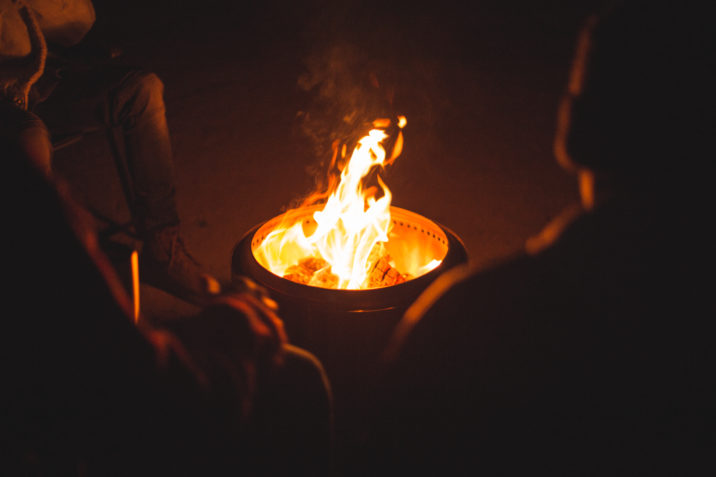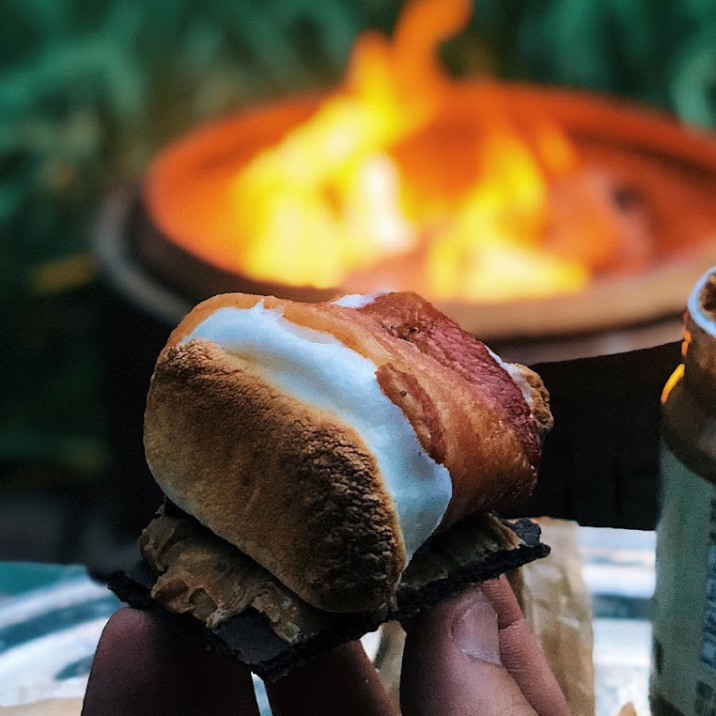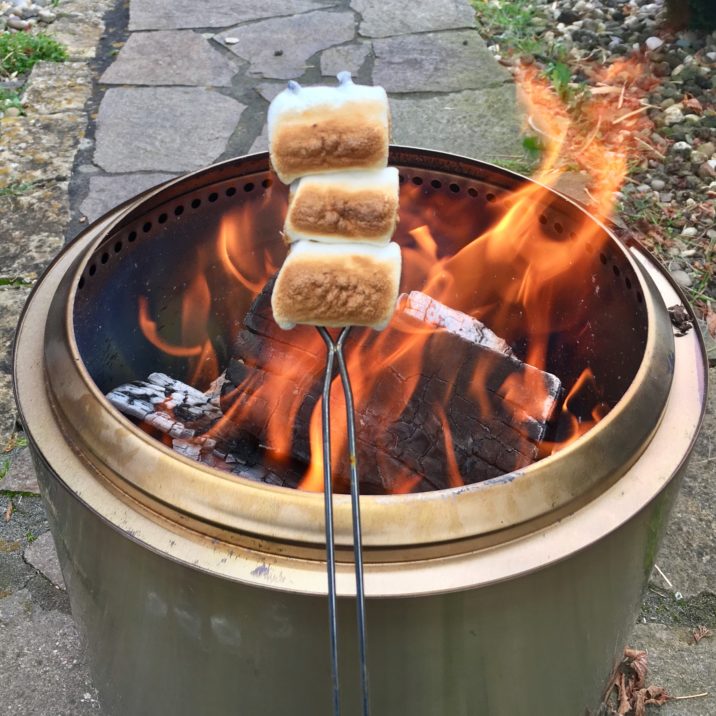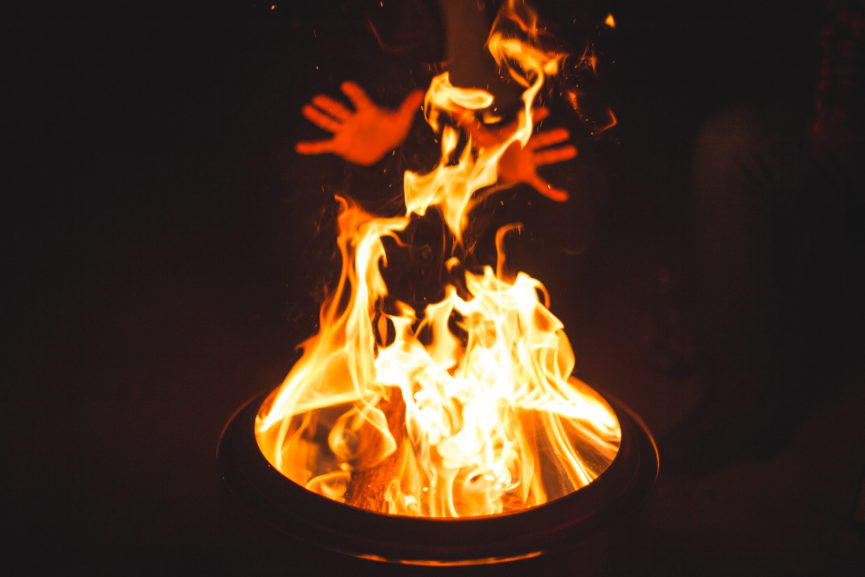by Tanner Colley
The primal bond between fire and humanity goes way back. You can imagine how our ancestors quickly realized the importance of fire to their survival. With this kind of history, we’ve had a lot of time to think about what to do around a fire.
Let’s explore the origins of two of our favorite campfire traditions: telling ghost stories and the making of the S’more.
Ghost Stories
Imagine the time when you first gathered around a campfire. Chances are someone spoke out: “Let’s tell ghost stories!” What is it about fire that inspires us to share and scare?
We have been telling stories around a fire since we first were able to control it. The first evidence of domestic use of fire happened around 400,000 years ago in a network of caves in Israel. The evidence points to the use of a single hearth for cooking and warmth.

The single hearth was important for the development of human civilization. The hearth formed a social focus while also helping to develop language. “Flames,” says the late Anthony Bourdain,” attract people to talk to one another.” The idea of hearth and home is a source of comfort for us where we can support one another.
Today, most of us stand around the kitchen swapping stories after a long day. It strengthens our relationships. Our ancestors likely did the same around the fire. One study notes how these times spent around a campfire helped shape the tradition of storytelling around a fire. Our ancestors, more than likely, did the same.
When did ghosts get added to stories told around the fire? You may be surprised that telling ghost stories around a fire was once a Christmas tradition.
Famous English writer, Jerome K. Jerome, wrote this about ghost stories and Christmas in 1891: “Whenever five or six English-speaking people meet around a fire on Christmas Eve, they start telling each other ghost stories.” In 1800s England, spooky stories had long been a way to whittle away cold and long nights. The “Winter Tale,” made popular by Shakespeare, was a fantasy of goblins, elves, and fairies. Charles Dickens took the idea of the Winter Tale and applied it in his writing of A Christmas Carol (1843) about an old miser named Scrooge who is visited by three ghosts on Christmas night in order to help him abandon his greedy ways and embrace charity and his community. The tale was meant to be read around a fire, and Dickens thought the Christmas Yule Log the perfect stage.
While the Christmas tradition of telling ghost stories never caught on in America, the ghost story around the fire stuck.
S’mores
You just can’t help yourself when offered a sinful, decadent S’more around the fire, but did you know this tradition has its roots in medicine?

One of the pillars of the S’more, the marshmallow, was a swamp plant that produces a sticky, white sap used until the Middle Ages to make lozenges to soothe a sore throat. The Latin name for marshmallow is Althea Officinalis, which comes from the Greek “althea,” meaning to “heal” or “cure.” In the 1800s, French chefs started making it into a sticky sweet rather than a medicine. The original recipe was much more sticky and squishy than the marshmallow we enjoy today. The mallow plant extract was also expensive, meaning marshmallows were enjoyed mostly by the upper class.
Over time, the mallow plant extract was replaced by gelatin, a cheaper alternative, making it available to the lower class. This was when the tradition really got roasting.

By the end of the century, “marshmallow roasts” were the toast of the town. One New York newspaper reported in 1892 “the simplicity of [marshmallow roasts] is particularly charming. One buys two or three pounds of marshmallows, invites half a dozen friends, and that is all the preparation required.” The recommended way of eating at the time was right off the roasting stick. Marshmallows weren’t stuffed between graham crackers with chocolate until the early 1900s.
Whether inspired by the Mallomar or the MoonPie (commercial treats involving marshmallows, chocolate, and graham crackers) the sacred name and form of “S’more” wouldn’t have been solidified had it not been for the Girl Scouts. A recipe book published by the group in 1927, Trampling and Trailing with the Girl Scouts, includes the first reference to the recipe being called a “S’more,” although the name was “Some More” rather than the shortened “S’more.” “Though it tastes like ‘some more,’ one is really enough,” the book describes.
What other campfire traditions do you enjoy? Share them with us on our Instagram and Facebook pages.

